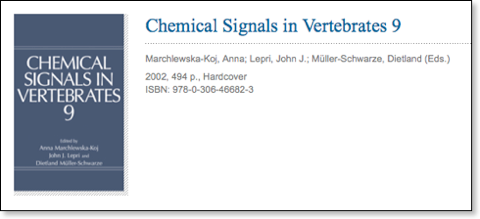Scent signals of status

Hurst, J.L., Beynon, R.J., Humphries, R.E., Malone, N., Nevison, C.M., Payne, C.E., Robertson, D.H.L. & Veggerby, C. (2001) Information in scent signals of status: the interface between behaviour and chemistry. . In: Chemical Signals in Vertebrates (Ed. A. Marchlewska-Koj, D. Muller-Schwarze & J. Lepri) pp43-50. Plenum Press, New York.
Labile and non-labile chemical components in scent marks interact with the spatial and temporal pattern of competitive scent marking behaviour to signal the ability of animals to dominate others in the locality and thus provide honest signals of individual competitive ability. Scent signals are particularly suitable for this since they persist in the environment providing a continuous record of competitive challenges and the outcome. In male house mice, urinary proteins and their volatile ligands signal the presence, owner and age of scent marks, which are all essential components of competitive scent signals. These signals allow females to select high quality and healthy mates that are able to out-compete their rivals and will provide genetic benefits (and possibly resources) for their offspring. Competitive scent marking can thus be seen as a sexual display, providing information concerning the general health and disease resistance (Hamilton and Zuk, 1982; Penn and Potts, 1998) and other genetic qualities affecting of the vigour of a male.